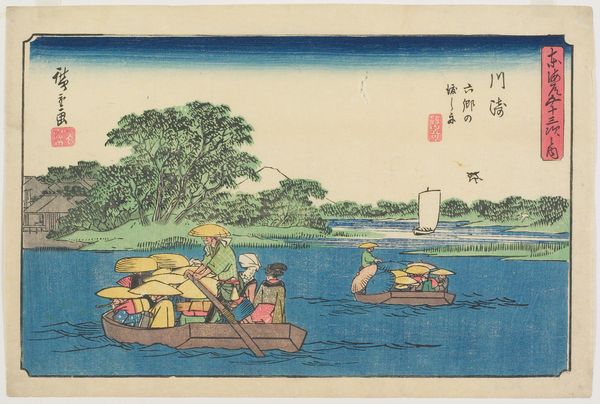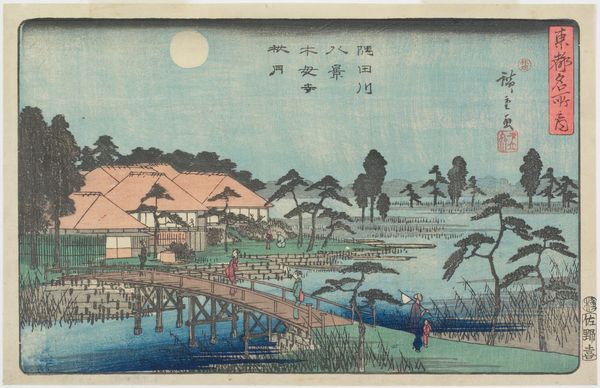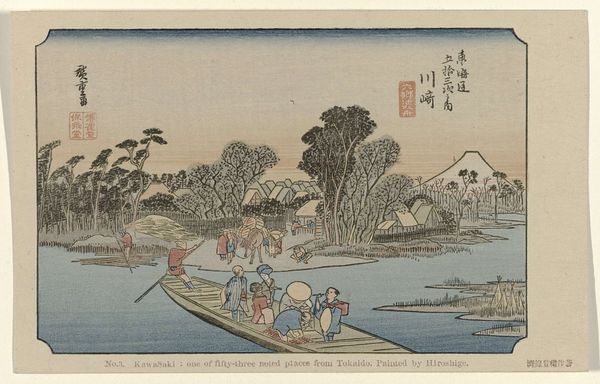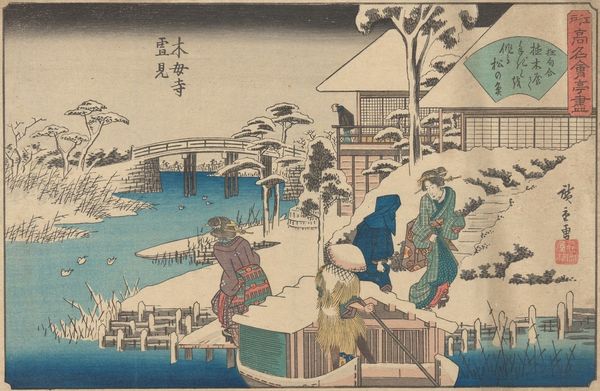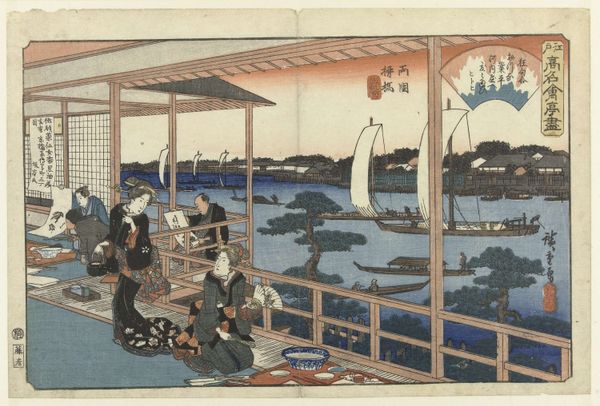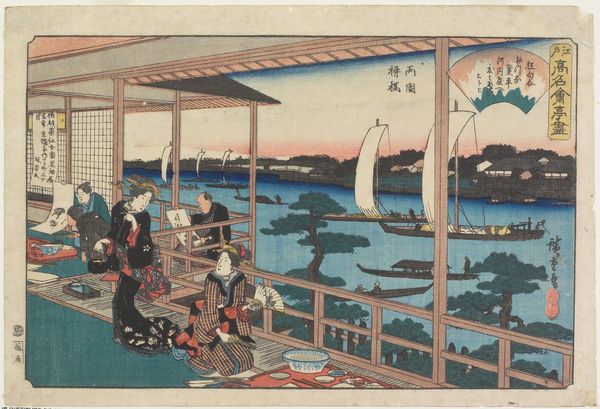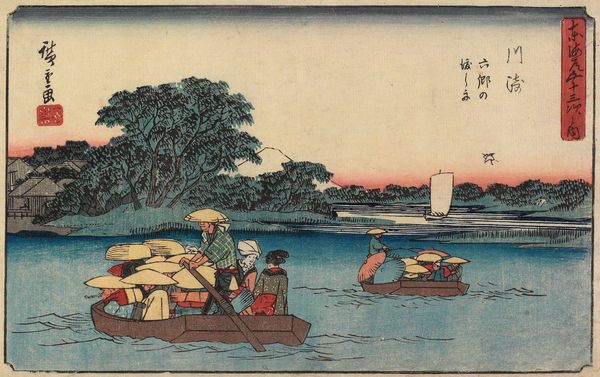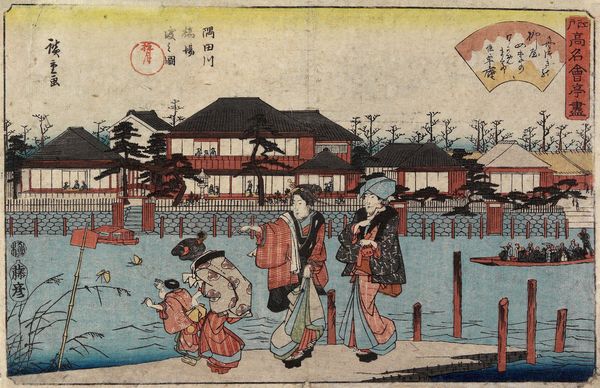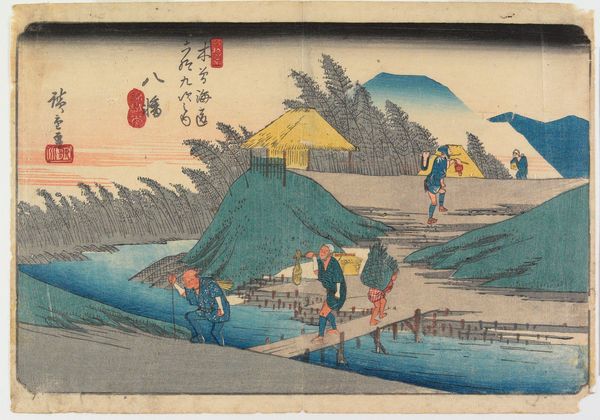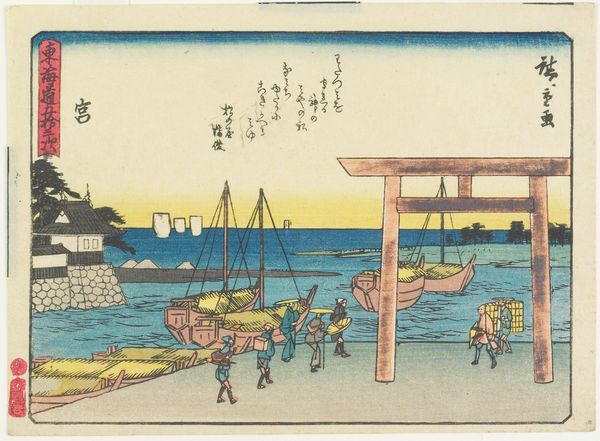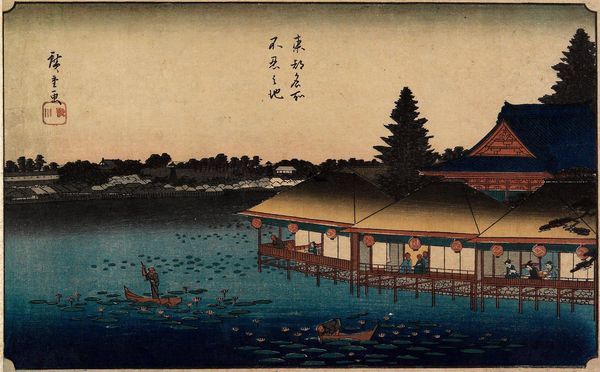
print, ink, woodblock-print
# print
#
asian-art
#
landscape
#
ukiyo-e
#
japan
#
ink
#
woodblock-print
#
genre-painting
Dimensions: 8 3/4 × 13 3/4 in. (22.2 × 35 cm) (image, horizontal ōban)
Copyright: Public Domain
Curator: Right, let’s look at this print by Utagawa Hiroshige, dating from around 1838 to 1840. It’s titled "Ogura-an at Koume in Honjo." I find the gentle melancholy of the scene very evocative. What strikes you? Editor: Immediately, the composition! It feels incredibly stage-managed, doesn’t it? With its vibrant indigo hues suggesting depth and placidity, the composition places the viewer at the convergence of leisurely waterborne pleasure and terrestrial ease. This work really highlights leisure as a form of identity. Curator: Ah, yes, it’s such a poised moment captured, isn't it? Hiroshige was a master of Ukiyo-e, the “floating world” prints and paintings that, to me, often feel like little poems. What's fascinating here is how he balances the earthly delights, those figures in the tea house, with the watery passage. Editor: Absolutely! Consider the figures. We're offered snippets of interactions within private domains: couples engaging in conversations indoors, women seemingly engrossed in creative activities within the boat. Are we, the observers, complicit in a gendered dynamic by being allowed these glimpses? And how does class factor into these curated observations of "ordinary" life? Curator: That's a wonderful perspective! And the details of daily life are beautifully rendered. Just look at the fisherman nonchalantly dangling his line, almost an afterthought, as this lively scene of pleasure unfolds just meters away. Is Hiroshige telling us something about the accessibility of leisure or its limitations? Or maybe he's contrasting these disparate economies, where angling feeds but does not always afford comfort. Editor: And consider the water itself: Hiroshige presents it in two distinct states of existence. As an unyielding abyss but also as a medium of passage and livelihood. Are these people just having fun, or are they part of something bigger than us, something cyclical? Something closer to how non-binary persons experience life? Curator: Indeed, this composition really provokes us to see the world through Hiroshige's lens and to find a new and deeper connection to daily life through art, offering new and diverse experiences through familiar imagery. Editor: I concur. It is a privilege to analyze a slice of floating-world, a snapshot that seems simultaneously of the past and pointedly pertinent to today’s discussions of inclusion, work, and identity.
Comments
No comments
Be the first to comment and join the conversation on the ultimate creative platform.
